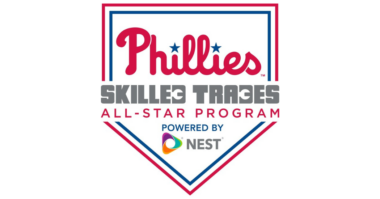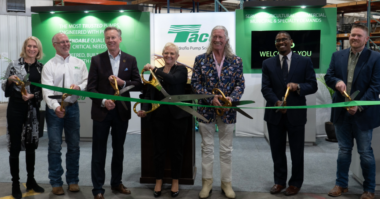The Hydraulic Institute (HI), North America’s largest trade association serving the pump industry, announced today a new data collection effort on pumping systems data. HI, working as part of the Extended Motor Product Label Initiative (EMPLI) consortium, is collaborating on “Designing a Program for Future Incentives for Energy Efficient Pumps and Pumping Systems.” The data collection form, and more details, can be found at: www.Pumps.org/DataCollection.
Data will be used to support a new voluntary labeling initiative for pumps and extended pump products (defined as the pump, motor, drive and controls). The concept is to reflect the energy savings potential of the equipment as installed in motor and control system applications. The development of an “extended-product label” in combination with the data collected will help form the basis for easily implementable prescriptive rebate programs with deemed(1) savings values
Support the EMPLI Pump Data Collection Project Encouraged:
Participation of end-users in submitting pump and load profile data to the EMPLI survey will assist the effort by utilities, working with the pump industry through HI, to better determine the energy savings potential of new rebate/incentive programs. Any other organizations with knowledge of building services operating data for pumps and pumping systems are also welcome to participate.
Building Services – Pump Operating Data Sought: EMPLI created a data collection form for the purpose of providing building owners/operators an opportunity to share pump operating data with the EMPLI team. A survey form can be downloaded from this site, and used to collect and report pump system operating data. Detailed instructions can be found on the survey. Download the survey at: www.Pumps.org/DataCollection.
All completed survey forms go directly to NEMA BIS, a third-party organization, under contract to CONFIDENTIALLY collect and perform analysis on all reported data. Contact information for NEMA BIS can be found in the form.
The EMPLI team has set September 30, 2015 as the deadline for reporting, and encourages as many organizations as possible to promote/share this opportunity with end-users and others that have access to building service data. For any questions about EMPLI or the data collection initiative, please contact:
Ethan A. Rogers, Senior Program Manager, Industry
American Council for an Energy-Efficient Economy (ACEEE)
Office: 202-507-4751
Email: erogers@aceee.org
Web: www.aceee.org
HI has joined EMPLI to collaborate with over two dozen representatives from the motor driven equipment manufacturing sector, trade organizations, utilities, energy efficiency program administrators, and energy efficiency non-governmental organizations (NGOs). Participants from the various trade organizations and manufacturers include individuals with expertise in performance testing, responding to U.S. and European rulemakings, and extensive market knowledge. Representatives from utilities and energy efficiency organizations are individuals with expertise in program design and implementation and knowledge of regulation and program evaluation.
The American Council for and Energy Efficient Economy (ACEEE) is the convening organization for EMPLI. The participating trade associations include National Electric Manufacturers Association (NEMA), Hydraulic Institute (HI), Air Moving and Control Association (AMCA), Compressed Air and Gas Institute (CAGI), and Fluid Sealing Association (FSA). The energy efficiency programs that have joined to date include Pacific Gas & Electric (PG&E), Eversource Energy, National Grid, Energy Trust of Oregon (ETO), Northwest Energy Efficiency Alliance (NEEA), Bonneville Power Administration (BPA), Northwest Power Council, Southern California Edison (SCE) and Consolidated Edison.
The collaborative EMPLI approach facilitates good communication between program administrators and the manufacturers of motor driven equipment. The manufacturers and their respective trade organizations are working to develop labels including a comparative metric that can simplify the effort needed by equipment users to identify more efficient products. Utilities and program administrators support methods for identifying potential energy savings that can then be incorporated into power utility incentive programs. The trade organizations and manufacturers, who are more familiar with their products and test methods, will determine the best comparative metric for inclusion in the label. Test standards and performance metrics will be established based on DOE regulations currently in process. For details see: www.Pumps.org/DOERulemaking.
In utilizing any product or extended product labeling program, electric power utility program administrators must be able to confirm that the energy savings and demand reductions that happen as a result of the investments made with rate payer funds. While growth in utility energy efficiency rebate programs has been very significant, with the estimates for 2015 in the range of $8B/year, little of these funds are dedicated to pump systems incentives or pump rebate programs. The design of such programs has only recently begun with the EMPLI project and work by the Hydraulic Institute Pump and Extended Product Labeling Committee, which is supporting this effort.
The Hydraulic Institute and the pump OEM’s participating in the EMPLI project have worked with the team to generate a spread sheet that captures important end use data that will be used to draft the necessary utility “work paper” for regulators and the cost benefit analysis allowing the various public service commissions to support the desired extended pump product incentives.





Comments